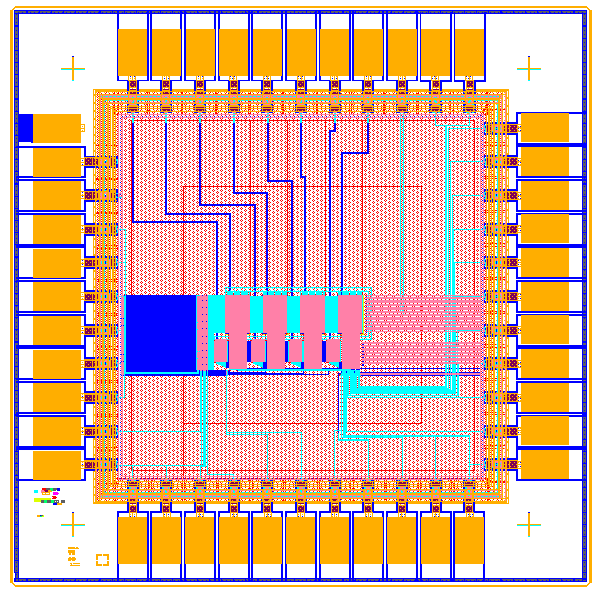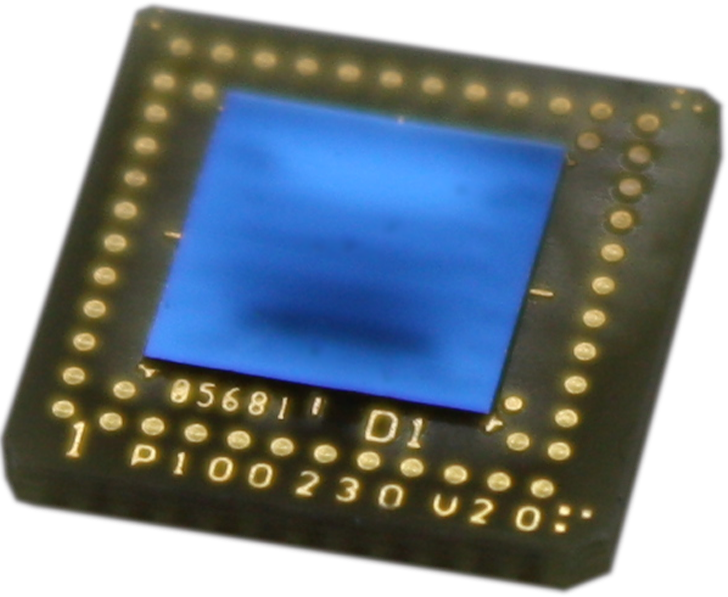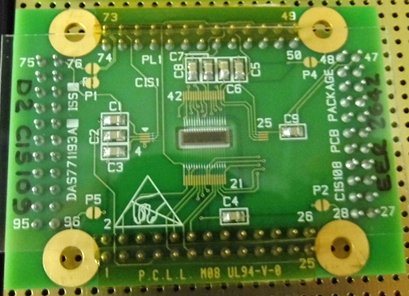CMOS Image Sensors
The CEI is involved in the design and the characterisation of a number of CMOS image sensors for applications in photon science, astronomy, space, Earth observation and planetary exploration. Among those, two sensors have been designed in house.
Backside biased, fully depleted CMOS image sensors

This sensor technology is particularly attractive for space applications and should allow performance similar to or exceeding state-of-the-art backside illuminated CCDs, but with much better radiation hardness typical of deep submicron CMOS processes.
EM CMOS
 In 2014 the CEI designed a novel image sensor incorporating buried channel CCD in 0.15µm 1.8V/5V CMOS process. The sensor has 200(V)×256(H) 10 µm square pixels and is manufactured on a 50 µm thick, high resistivity, fully depleted bulk Si substrate by the Swiss company ESPROS Photonics Corporation (EPC).
In 2014 the CEI designed a novel image sensor incorporating buried channel CCD in 0.15µm 1.8V/5V CMOS process. The sensor has 200(V)×256(H) 10 µm square pixels and is manufactured on a 50 µm thick, high resistivity, fully depleted bulk Si substrate by the Swiss company ESPROS Photonics Corporation (EPC).
The sensor incorporates CCD pixel designs capable of electron multiplication (EM) and is dubbed Electron Multiplying Test Chip 1 (EMTC1). Thanks to the very thin gate dielectrics and small inter-gate gaps possible the EPC CMOS process, the sensor achieves excellent EM gain at one third of the clock voltage usually required in a typical EMCCD, promising low power operation.
EMTC1 is a column-parallel device capable of very fast readout through multiplexing the 256 CCD columns into 8 high speed analogue outputs. Due to its architecture, EMTC1 is also capable of TDI mode readout. This, combined with the EM capabilities and low power operation makes it particularly interesting for Earth observation and surveillance applications.
Snapshot CMOS imager

CIS109 is a CMOS image sensor incorporating a 10T pixel design that integrates a pinned photodiode with charge storage and correlated double sampling circuitry. CIS109 is capable of snapshot image capture with local storage of the signal per pixel and global shutter. The sensor is intended for high resolution, low noise hyperspectral imaging, primarily for Earth observation. The sensor was designed by e2v and its characterisation results are presented in this paper.
TDI CMOS imager
We have characterised the performance of a Time Delay and Integration (TDI) CMOS sensor, designed by e2v Grenoble (France) for operation in the radiation environment of low Earth orbit. The sensor is a CCD-like charge transfer device allowing noiseless signal summation in the charge domain. The use of CMOS process allows potential advantages such as lower power consumption, smaller pixels, higher line rate and extra on-chip functionality, which can simplify system design. The effects of proton irradiation on the charge transfer efficiency and the dark current are presented here.
JUICE
One of our main CMOS activities is the development of the CIS115 device in collaboration with e2v technologies for the JUICE mission to Jupiter, and its detailed characterisation, both for its electro-optic performance, and its ability to survivve the harsh radiation environment to be encountered around Jupiter. More details are available from the JUICE mission page.
Contact us
Centre for Electronic Imaging
School of Physical Sciences
The Open University
Walton Hall
Milton Keynes
MK7 6AA, United Kingdom
Please contact us at cei@open.ac.uk with any enquiries.
